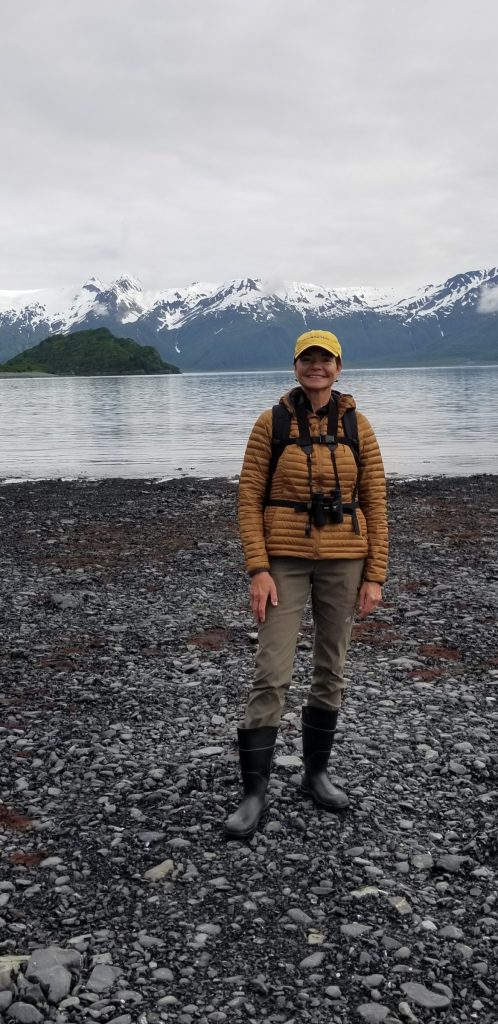Mary Regel has been busy since she retired as the director of international development from the Wisconsin Department of Commerce in 2011. Regel has assisted with special events to raise money for the Tommy G. Thompson Charity. The charity, created by Wisconsin’s longest-serving governor, provides scholarships to students entering the health care field at Madison Area Technical College. Regel also fundraises for the Wisconsin Women’s Health Foundation, a non-profit organization that offers statewide health education programs to assist Wisconsin women and their families reach their healthiest potential. In addition to those philanthropy projects, Regel teaches a chair exercise class at Oakwood Village, a continuing care retirement community in Madison, and assists first graders with reading comprehension. And, this past June, she took a trip to Alaska. The trip might not have been as enjoyable if not for a surgery cancellation at UW Health Eye Clinics.
Regel is originally from Detroit, Michigan. She moved to Madison in 1971 when her husband came to graduate school at UW-Madison. She, too, decided to finish her degree here, in agricultural economics and business. She started her career with the Wisconsin Department of Agriculture, Trade and Consumer Protection in 1978. As an agricultural economist, she worked on bills that affected agriculture here in Wisconsin and helped small companies market their products. After nine years, Regel moved to the Wisconsin Department of Commerce. Regel was then promoted to director of international development with the Department of Commerce. It was her job to convince foreign cheese companies to expand in Wisconsin and assist Wisconsin companies in selling internationally.
Regel had worn glasses or contacts since she was in junior high, and in the middle of her career, in her mid 40s, she added reading glasses to the mix. In 2015, she decided to see Dr. Amy Walker, OD, clinical optometrist and co-vice chair of clinical affairs, at UW Health Eye Clinic because of her expertise with monovision contacts. Monovision contact lenses can help correct aging eyes, with one lens prescribed for near vision and one lens prescribed for distance. Regel found that she liked monovision contacts, as they eliminated the need for readers. Regel became a patient of Dr. Walker. Dr. Walker continued to work on Regel’s monovision lenses, but she noticed something else. “Dr. Walker said there was good news and bad news,” Regel recalls, “She said, ‘The bad news is that I think you’re going to have cataracts in a few years. The good news is that we should be able to correct your vision.’”
A change in insurance meant that Regel was unable to come to UW Health Eye Clinics or see Dr. Walker in 2017 and 2018. Other eye care providers during that time did not comment on the cataracts. Towards the end of 2018, however, Regel became frustrated. Her sunglasses always seemed blurry. She couldn’t see street signs or license plate numbers. “I was diligent about using my new contacts,” she remembers, “but I just couldn’t see as clearly as I used to.”
In January of 2019, her insurance changed again and she was able to return to Dr. Walker that month. Dr. Walker immediately noticed that the cataracts had grown. It was time to see a specialist.
Sarah Nehls, MD, cornea and cataract specialist, examined Regel in March and found cataracts in both eyes, right in the middle of each cornea. There was no hesitation; the surgery needed to be done. Regel had her eyes measured for cataract surgery in March, and she was scheduled for the procedure in June. She was slightly disappointed that it would come after the big Alaska trip. Then, that fateful cancellation from another surgery patient came and a spot opened up. Regel was rescheduled for surgery in April, before the trip, and the cloudy cataract in her right eye was replaced with a distance lens.
“My husband and I went to Alaska and it made the whole trip,” regel said. “The surgery made the difference in taking the trip from good to amazing. I could see the animals. The difference that you can see is astounding.”

After her trip, Regel had cataract surgery in her left eye, her reading eye, in July. She was just as thrilled with the results of the second surgery. “My eyes are still adjusting to the monovision. They have to learn together. I was very nervous, but Dr. Nehls is wonderful. The whole team, I can’t say enough good things about them.”

These stories, the transformation of sight after cataract surgery, continues to be one of the most powerful examples of what ophthalmologists can do. Cataract is the most frequent cause of vision loss in people over the age of 40. It is also the most common surgery in the United States. A cataract forms when proteins in the lens of the eye start to break down and clump together, creating a cloudy area that disturbs normal vision. Objects are blurry, hazy, and less colorful.
“I woke up the next day and said, ‘This is a miracle that I can see this clearly.’ I was just dumbfounded at how clear everything was. The colors are brighter. The difference at how sharp the letters are, the colors of the grass.”
In traditional laser cataract surgery, called phacoemulsification, a surgeon creates a small incision in the cornea. A small instrument is inserted through this opening behind your pupil, where the lens sits in a capsule. The surgeon inserts a pen-shaped probe that delivers ultrasound waves to break up the cloudy lens. The clumps are then suctioned out of the eye. An artificial lens called an intraocular lens (IOL) is then inserted. Finally, the incision is closed with a special seal-sealing liquid.
In laser-assisted cataract surgery, your eye is scanned with a camera/ultrasound device to map the surface and your lens. The data tells the laser the location, size and depth to make the incisions. In addition to creating a corneal incision and the opening in the capsule, the laser may soften the cataract. Like traditional surgery, an ultrasound proud breaks the cataract into pieces, the clumps are suctioned out, the IOL is inserted, and the incision is closed.
Regel is a testament to the transformative power of cataract surgery. In addition to her charitable good deeds, she can continue to enjoy her four grandchildren and numerous outdoor activities – biking, golf, cross country ski, and hiking – with improved vision.
To learn more about cataracts, visit https://www.ophth.wisc.edu/patient-care/cataract-care/